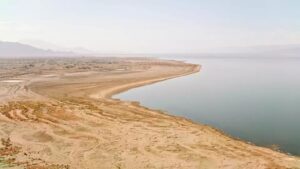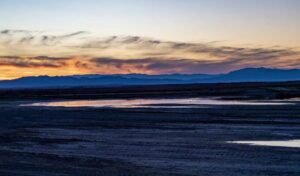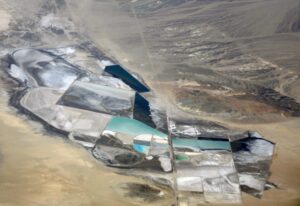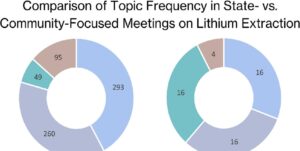In The News

A struggling California region is suddenly poised to become very, very rich
Imperial County, a sprawling desert region three hours southeast of Los Angeles that straddles the U.S.-Mexico border, may not be what you would typically associate with Southern California.

The Salton Sea has even more lithium than previously thought, new report finds
Want to produce a huge amount of lithium for electric vehicle batteries — and also batteries that keep our homes powered after sundown — without causing the environmental destruction that lithium extraction often entails?

Lithium mining in Southern California’s Salton Sea geothermal system, with Dr. Pat Dobson
While the use of lithium to power electric vehicle batteries has been around for close to a decade, and while car manufacturers and scientists have been on the hunt for a more efficient battery, today most manufacturers rely on lithium batteries as their primary go-to for power

What do frontline communities want to know about lithium extraction?
Clean energy technologies provide global benefits through climate mitigation and many local environmental benefits for consumers. However, the supply chains that produce them inevitably impose some environmental burden on the communities where they operate. To align with the principles of environmental justice, the burdens and benefits of clean energy supply chains should be distributed equitably, with decision-making processes that empower local communities to participate.

Balancing a Battery-Powered Future With Energy Justice
As a new graduate student embarking on a master’s degree at the UC Davis Energy and Efficiency Institute in 2018, Meg Slattery was struck by how centrally batteries – particularly the rechargeable lithium-ion batteries in electric cars – figured into California’s decarbonization strategy.

DOE Announces $140 Million for Research on Chemical and Materials Sciences to Advance Clean Energy Technologies and Low-Carbon Manufacturing
The multidisciplinary MINES program will establish fundamental science for the synthesis of battery materials from natural resources, enabling a new ‘separation-by-synthesis’ paradigm for energy storage manufacturing. We will address outstanding knowledge gaps related to synthesis in multicomponent systems, for which manifold component interactions control driving forces and transformation pathways in complex ways, and governing relationships are impossible to visualize or intuit in their entirety. Our interdisciplinary expertise and existing collaborative partnerships provide a strong basis to achieve progress towards material- and energy efficient low-carbon manufacturing for energy storage.
